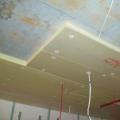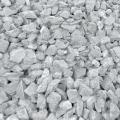How to make a vase from cement and rags at home?
Cement is not only a unique building material for the construction of buildings and structures, but an excellent component for the manufacture of vases, flowerpots and pots for growing flowers and ornamental plants.
What materials will you need?
It is very simple and accessible to any owner and even housewife. The following materials and tools will be required:
- “Grey” or white Portland cement M400 or M500:
- Sifted and washed sand;
- Frequent water;
- Color for concrete or paint for concrete;
- Container for mixing the solution;
- Electric drill with mixer attachment;
- Polyethylene film; or release agent (solidol, grease, etc.);
- Form;
- “Rag” – jute (natural) burlap, tulle fabric, terry or “waffle” towel.
Creation process
As a form, you can use a plastic or metal bucket, basin, ceramic or plastic flowerpot - any suitable container of a conical, pyramidal or trapezoidal shape. The latter is very important for the ability to remove the finished product without destroying the mold. The mold is tightly wrapped in plastic wrap or thoroughly coated with a release agent.

A suitable shape and “rag” have been selected, we proceed to resisting the cement mortar. Place a “rag” in a suitable container and mark its upper limit on the wall of the container. This will be the volume of solution filled. Next, having removed the material, fill the marked volume (with a small margin) with cement and sand in a 1:1 ratio and mix thoroughly.
Prepare water based on the calculation of 0.5 of the volume of cement. If you plan to paint the entire thickness of the vase, add concrete color to the water according to the instructions and mix thoroughly. Pour small portions into the caustic with a cement-sand mixture and mix with an electric drill with a mixer attachment. Bring it to the consistency of liquid (store-bought) sour cream and dip a “rag” into it. The “rag” is soaked in the solution for 10 minutes. If necessary, remove and inspect, making sure that the entire “thickness” is well saturated with the solution.
Throw it onto the form, straighten it as you please and leave it in a cool place for 24-72 hours. Carefully remove from the mold and allow to dry completely. Drill a drainage hole with a diameter of 10-15 mm in the bottom. Sanding with sandpaper removes minor imperfections (burrs, sagging, drops of cement, etc.).

Further operations with the vase are at the discretion of the owner. It can be left as is, covered with mosaics, glass, shells, sea pebbles, painted with concrete paints, or decorated in other available ways.
Advice! If you want to get a bright, colorful product, use white cement and as white sand as possible. However, in this case, you need to be prepared for a significant increase in the cost of the product - domestic white cement on average costs 2.5 times more than ordinary “gray” Portland cement, imported (Turkish or Egyptian) is even more expensive.
 Construction materials and list of works
Construction materials and list of works Proper insulation of a wooden ceiling in a private house
Proper insulation of a wooden ceiling in a private house What types of crushed stone are there?
What types of crushed stone are there?